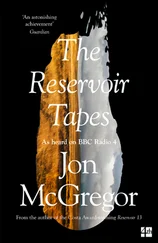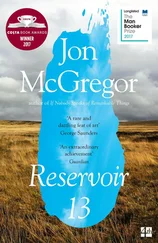vii. Understood to be a reference to the Prince William of Gloucester (PWOG) barracks, located on high ground to the east of Grantham, overlooking both the town and all major north — south routes. The base, while also serving as a logistics and training centre, is home to five squadrons of government army reservists known as the ‘Territorial Army’. These are soldiers not ordinarily resident within the barracks, but rather spread widely across the region, embedded in civilian positions and not uniformed until such time as their services are required. They are available to be called into service at very short notice, and can move to active patrol readiness within a matter of hours.
viii. Unconfirmed.
ix. Due to their ages at the time, and the lack of independent verification from the period in question, the exact route taken by the appellants and their associates/guardians is impossible to verify. But it can be noted here that a walking route directly south from Bassingham and Haddington would pass close by the PWOG barracks, and in any case through territory where any civilians may have been unidentified ‘Territorial Army’ personnel. An alternative route is likely therefore to have led through the area around North and South Raunceby, heading towards the fens which run alongside Forty Foot Drain. On this route, visibility could have been clear as far as the coast, and any approach would have been observed from some distance. There are also in this area numerous culverts and ditches which serve to drain the fields, as well as assorted agricultural buildings such as sheds, workshops and barns, any of which may have been suitable as hiding places or places of shelter or refuge.
x. This chronology is supported by an extract from the testimony of Appellant F, in section 24.5 of transcript 72: ‘I was worried about it, yeah. Of course. I knew we weren’t going to be back for like a long time. My mum was all worried because I was so young, and she was scared of what might happen on the way, and plus it was such a long way. Yeah, so. She asked me not to go. But everyone else was going, so we all got like up for it and that and we went. This was November that year like. I was eleven, yeah? We were just walking, yeah?’
xi. This appears to refer to a route taken through the areas formerly known as Cambridgeshire, Bedfordshire, Hertfordshire and Essex. The route is unlikely to have been direct, being influenced by local militia movements during the period in question as well as by the uncertain motives and navigational abilities of the appellants’ guardians. The landscape along this route is for the most part of gently undulating farmland, dotted with quiet villages and isolated settlements and intersected by a network of river and canal systems. The relatively level terrain would have enabled the appellants and their associates to cover larger distances than might otherwise have been expected, depending on the security conditions and the available diet.
xii. It may be pertinent here to reproduce an instructional leaflet which was apparently in wide circulation during the period in question [Archival Reference LNS-2029-ff-201.01]: ‘Careful preparations should be made before setting out. Appropriate clothing should be worn, including proper stout and waterproof boots. Clothing necessary to keeping warm and dry should be worn or carried. Dressing in layers is recommended. Sun-cream and a sun-hat should be carried, as well as waterproof jacket and trousers. […] Take a small first-aid kit, and know how to use it: incidents may occur many miles from the nearest house or village, and even five miles can be a long way to walk with a broken ankle, shattered pelvis, or projectile wound. Never travel alone […], even for short periods of time. Take care when lighting fires. Always boil drinking water. Keep out of watercourses or flooded areas wherever possible. Note local information on landmine placement and other UXO or IED hazard, where such information can be trusted. […] Be very wary of strangers. Take careful note of weather forecasts and changing security conditions and be prepared to alter your plans accordingly. Never tell anyone where you are going. […]’
xiii. Some notes on landmines and other explosive devices follow, and may serve to illustrate this particular section of Appellant B’s testimony (which remains unverified, if compelling). With acknowledgments to the Explosive Hazards Advisory Group. Landmines are a cheap and effective weapon which can be deployed across large areas by relatively untrained combatants. Whilst the injuries caused by landmines are often, by design, not immediately fatal, they can lead to death unless rapid medical assistance is provided. Injuries typically include the severing or partial severing of limbs, evisceration, concussion, and severe loss of blood. Unless the victim is evacuated to an established medical centre, wounds sustained in the field will be vulnerable to infection. Some types of mine will be immediately fatal; these include those targeted at vehicles, as well as the ‘bounding’ type of mine designed to propel itself upwards before detonating its main explosive charge at a height of around three to five feet (i.e. waist- or chest-height). It should be noted that the strategic impact of landmines, and of Improvised Explosive Devices, is as much psychological as it is material; the loss of morale can be substantial, and the impact on the local civilian population is usually significant. Unauthorised movement of goods and personnel, and unwarranted refugee movements, can thus be easily prevented. When looking for landmines, visual clues can include ground colour distortion, depressions in the ground surface, variations in vegetation growth patterns, disturbed topsoil or even protruding elements of the device itself. A tactical understanding of the mine deployment can also provide clues. However, no path or area should be considered safe until it has been systematically checked, cleared, and declared as such.
xiv. See also the public testimonies collected in the publication, Some of the Boys Didn’t Make It [Committee for the Support of Returnees, Edinburgh Free Press, Edinburgh].
xv. Historically, the depopulated areas of eastern Essex were celebrated for their attraction to the leisure rambler and wildlife enthusiast; reference is made in published guidebooks from shortly before the period in question to ‘ an ancient landscape of windblown salt-marshes, home to many thousands of over-wintering birds as well as a variety of vegetation such as bee orchid, yellow-wort, southern marsh orchid, sea buckthorn, teasel and trefoil, where footpaths wind along flood-defence banks, passing concrete pillboxes with rusting gun emplacements and an entrancing view of the coast. ’ Although it has been noted that during the period in question this area would have seen a population increase as a result of displacement from the urban centres, the appellants’ claims in this section of the transcript do appear feasible and thus are considered valid for the purposes of appeal.
xvi. Verified. Note this reference, from the same guidebook referred to in FN xv: ‘ Remember to bring your binoculars. Remember, also, that while this landscape can be evocative and memorable, it can also be disorientating, with many of the smaller paths and creeks not being marked on the map and tidal flows dramatically changing the topography within the space of a few hours. ’ While the associates and guardians travelling with Appellants B and E would have been familiar with wetlands and tidal flows as a result of their geographical origins, it is indeed likely that groups moving through the area from other parts of the country may well have made navigational errors, with results as described in this section of the testimony.
Читать дальше
Конец ознакомительного отрывка
Купить книгу




![Нил Уолш - Единственное, Что Имеет Значение [The Only Thing That Matters]](/books/393630/nil-uolsh-edinstvennoe-chto-imeet-znachenie-the-onl-thumb.webp)







